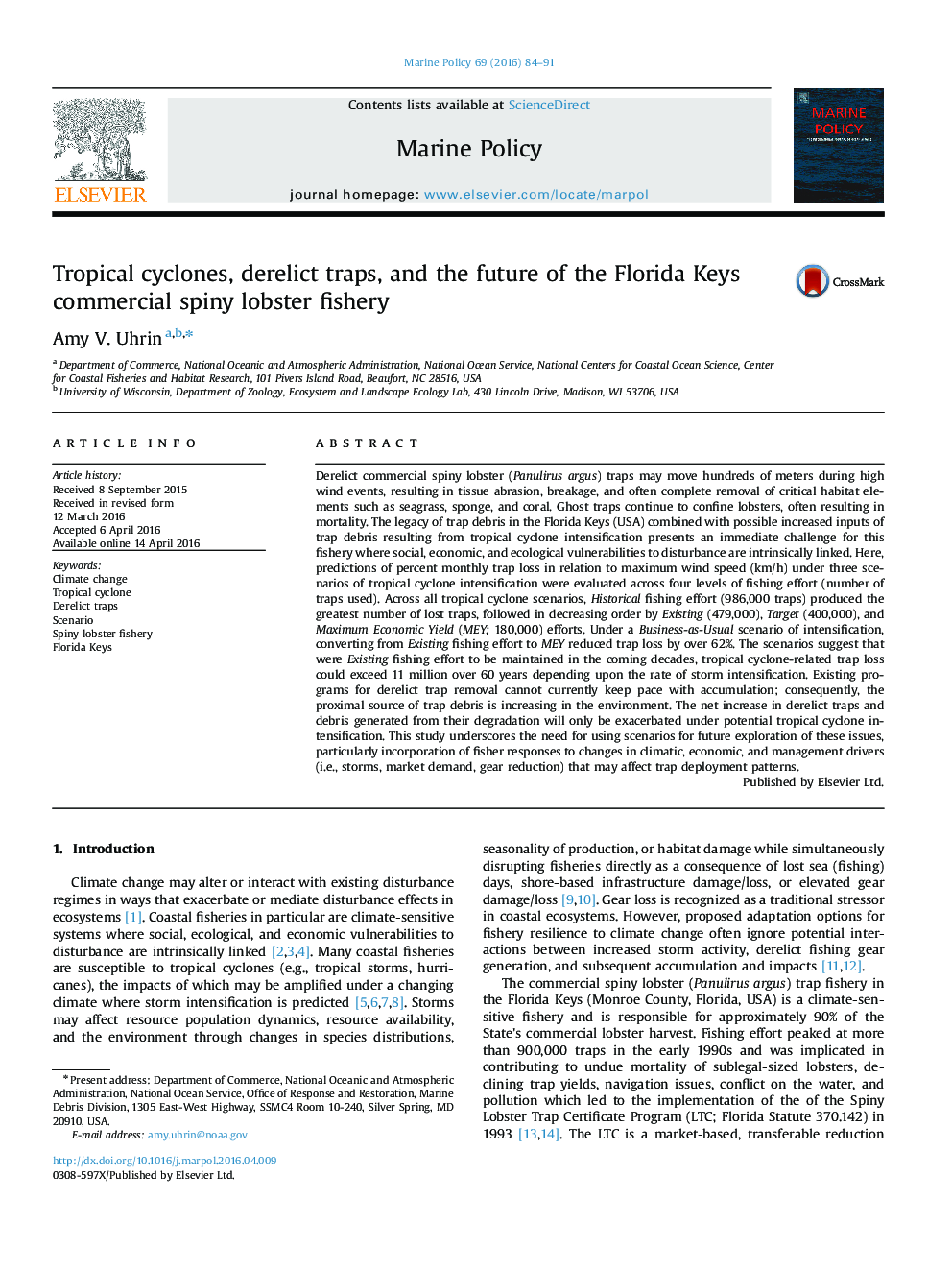| کد مقاله | کد نشریه | سال انتشار | مقاله انگلیسی | نسخه تمام متن |
|---|---|---|---|---|
| 7489155 | 1485510 | 2016 | 8 صفحه PDF | دانلود رایگان |
عنوان انگلیسی مقاله ISI
Tropical cyclones, derelict traps, and the future of the Florida Keys commercial spiny lobster fishery
ترجمه فارسی عنوان
سیکلون های گرمسیری، تله های خالی و آینده ماهیگیری خرچنگ خرگوش تجاری فلوریدا کلید ها
دانلود مقاله + سفارش ترجمه
دانلود مقاله ISI انگلیسی
رایگان برای ایرانیان
کلمات کلیدی
تغییر آب و هوا، سیکلون گرمسیری، تله های سقوط سناریو، شکارچی خرچنگ نخودچی، کلید های فلوریدا،
موضوعات مرتبط
مهندسی و علوم پایه
سایر رشته های مهندسی
مهندسی دریا (اقیانوس)
چکیده انگلیسی
Derelict commercial spiny lobster (Panulirus argus) traps may move hundreds of meters during high wind events, resulting in tissue abrasion, breakage, and often complete removal of critical habitat elements such as seagrass, sponge, and coral. Ghost traps continue to confine lobsters, often resulting in mortality. The legacy of trap debris in the Florida Keys (USA) combined with possible increased inputs of trap debris resulting from tropical cyclone intensification presents an immediate challenge for this fishery where social, economic, and ecological vulnerabilities to disturbance are intrinsically linked. Here, predictions of percent monthly trap loss in relation to maximum wind speed (km/h) under three scenarios of tropical cyclone intensification were evaluated across four levels of fishing effort (number of traps used). Across all tropical cyclone scenarios, Historical fishing effort (986,000 traps) produced the greatest number of lost traps, followed in decreasing order by Existing (479,000), Target (400,000), and Maximum Economic Yield (MEY; 180,000) efforts. Under a Business-as-Usual scenario of intensification, converting from Existing fishing effort to MEY reduced trap loss by over 62%. The scenarios suggest that were Existing fishing effort to be maintained in the coming decades, tropical cyclone-related trap loss could exceed 11 million over 60 years depending upon the rate of storm intensification. Existing programs for derelict trap removal cannot currently keep pace with accumulation; consequently, the proximal source of trap debris is increasing in the environment. The net increase in derelict traps and debris generated from their degradation will only be exacerbated under potential tropical cyclone intensification. This study underscores the need for using scenarios for future exploration of these issues, particularly incorporation of fisher responses to changes in climatic, economic, and management drivers (i.e., storms, market demand, gear reduction) that may affect trap deployment patterns.
ناشر
Database: Elsevier - ScienceDirect (ساینس دایرکت)
Journal: Marine Policy - Volume 69, July 2016, Pages 84-91
Journal: Marine Policy - Volume 69, July 2016, Pages 84-91
نویسندگان
Amy V. Uhrin,
